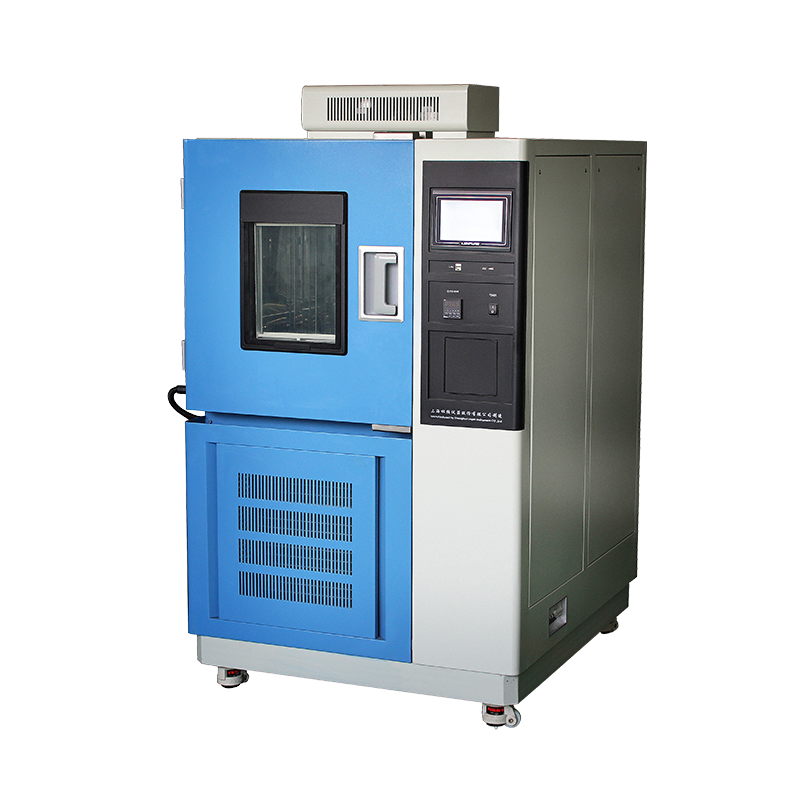

Purpose and scope
This guide regulates the daily start-up/shut-down, parameter setting, sample loading, process monitoring and maintenance of laboratory constant-temperature and humidity test chambers (hereafter “the chamber”), ensuring personnel safety, equipment reliability and data traceability. It applies to constant or cyclic damp-heat tests within –70 °C to +150 °C and 20 %RH to 98 %RH for electronics, electrical appliances, automotive, aerospace, materials, pharmaceutical and food industries.

Terms and definitions
Wet-bulb wick: 100 % cotton, degreased gauze kept clean and moist for wet-bulb temperature measurement.
Usable volume: the space that can be filled while maintaining uniformity, generally about one third of the nominal chamber volume.
Heating/cooling rate: average air temperature change in empty chamber, expressed in °C min⁻¹.
PID control: proportional-integral-derivative algorithm for precise temperature and humidity regulation.
Pre-operation preparation
Personnel: only operators who have passed laboratory safety training and chamber-specific certification may use the equipment; trainees must be accompanied by an authorised engineer.
Environment: ambient temperature 5–35 °C, RH ≤ 85 %, no strong vibration or direct sunlight; keep ≥ 60 cm clearance around the chamber; level floor, locked castors; nothing on the roof.
Equipment inspection:
Visually check door seal, viewing window, cables and water lines for damage.
Verify mains voltage matches nameplate (±10 %) and earth resistance ≤ 4 Ω.
Switch on mains and residual-current device; touch-screen self-test must pass without alarms.
If water level is below one third, refill with de-ionised or distilled water (conductivity ≤ 5 µS cm⁻¹).
For humidity tests fit a new or laundered wick: 100 mm × 30 mm × 0.3 mm; upper end fully wraps the sensor tip, lower end immersed 10 mm below water surface; water temperature within 2 °C of target dew-point.
Standard operating procedure
Sample loading:
Place samples on corrosion-resistant trays or stainless grids; single piece ≤ 30 kg.
Total sample volume ≤ usable volume; maximum frontal area ≤ half of duct cross-section.
Leave ≥ 20 mm between samples and ≥ 50 mm to side walls, air-supply and return openings.
No flammable, explosive, highly radioactive, toxic or exothermic materials.
Liquid samples must be sealed, verified leak-free by inversion, and placed in a secondary containment tray if necessary.
Parameter setting:
Enter “Program Edit” screen and input: target temperature, target RH, heating/cooling rate, dwell time, cycle number according to test standard.
Enable deviation alarms: ±2 °C, ±3 %RH; enable power-fail resume if available.
Save and review program to ensure no logical conflict (e.g. low temperature with high RH beyond dew-point).
Start-up:
Run “air circulation” alone for 5 min; confirm fan noise normal.
Press “Run”; the chamber automatically regulates heating, cooling, humidifying and de-humidifying via PID.
Do not open the door during the initial phase to prevent moisture loss or evaporator frosting.
Monitoring and recording
Inspect every 30 min; record actual temperature, RH, alarms, compressor and humidifier on/off cycles; view samples through the window, using internal LED lighting if needed; opening the door is forbidden. If an out-of-tolerance alarm occurs, record it immediately, notify the equipment manager and follow the emergency procedure.
Shut-down and reset
Normal shut-down:
After program end or manual stop, if chamber temperature ≥ 60 °C or ≤ 5 °C select “return to ambient” (25 °C, 30 %RH) until internal temperature < 35 °C. Switch off humidifier heater and exhaust moisture for 10 min to avoid condensation. Stop circulation, close touch-screen, switch off mains and residual-current device. Sample removal: Wear thermal gloves; open door only when centre temperature differs from ambient by ≤ 10 °C. Seal samples immediately to prevent moisture absorption or oxidation. Complete the Test Record, quoting the temperature/RH curve file name. Cleaning and reset: Drain wet-bulb tray; dispose of wick as medical waste. Wipe inner walls with lint-free cloth damped in ≤ 0.1 % neutral detergent, rinse twice with pure water. Leave door open 10 min for natural drying; apply thin silicone grease to door seal; close door, fill in Equipment Log and sign. Safety and emergency response Hazards: burns, frostbite, steam jet, electric shock, compressor rupture, refrigerant leak, sample explosion, toxic gas release. Emergency steps: Personnel injury: press E-stop, switch off machine, remove victim to safe area, give first aid, report to EHS. Smoke or fire: cut mains, use CO₂ extinguisher, trigger fire alarm. Refrigerant leak: open door, ventilate, wear respirator, check O₂ level, call certified technician. Abnormal sample: keep door closed, observe through window, activate forced exhaust, contact responsible engineer. Maintenance and precautions Daily: check water level, door seal, wick condition. Weekly: clean condenser fins with compressed air ≤ 0.3 MPa, wash humidifier pan. Monthly: calibrate temperature and RH; correct if deviation > ±0.3 °C or ±2 %RH.
Quarterly: replace compressor oil and dryer filter, leak-check system.
Annually: external metrology calibration, update certificate.
Never use the chamber to heat food or store chemicals; never bypass safety devices; never service while energised; never spray water on the enclosure or electrical box.
Quick pre-run checklist
Residual-current indicator lit; wick clean and moist; water ≥ half full; sample load ≤ 1/3 volume; door seal intact; parameters match standard; E-stop reset; record sheets ready. Sign and date.
Strict adherence to this guide can reduce human-induced failures by more than 60 % and improve test reproducibility by over 30 %. Any deviation must be reported to the laboratory supervisor immediately and documented in a Deviation Report for evaluation and closure. Standardisation and institutionalisation make every damp-heat cycle a solid cornerstone of quality verification.